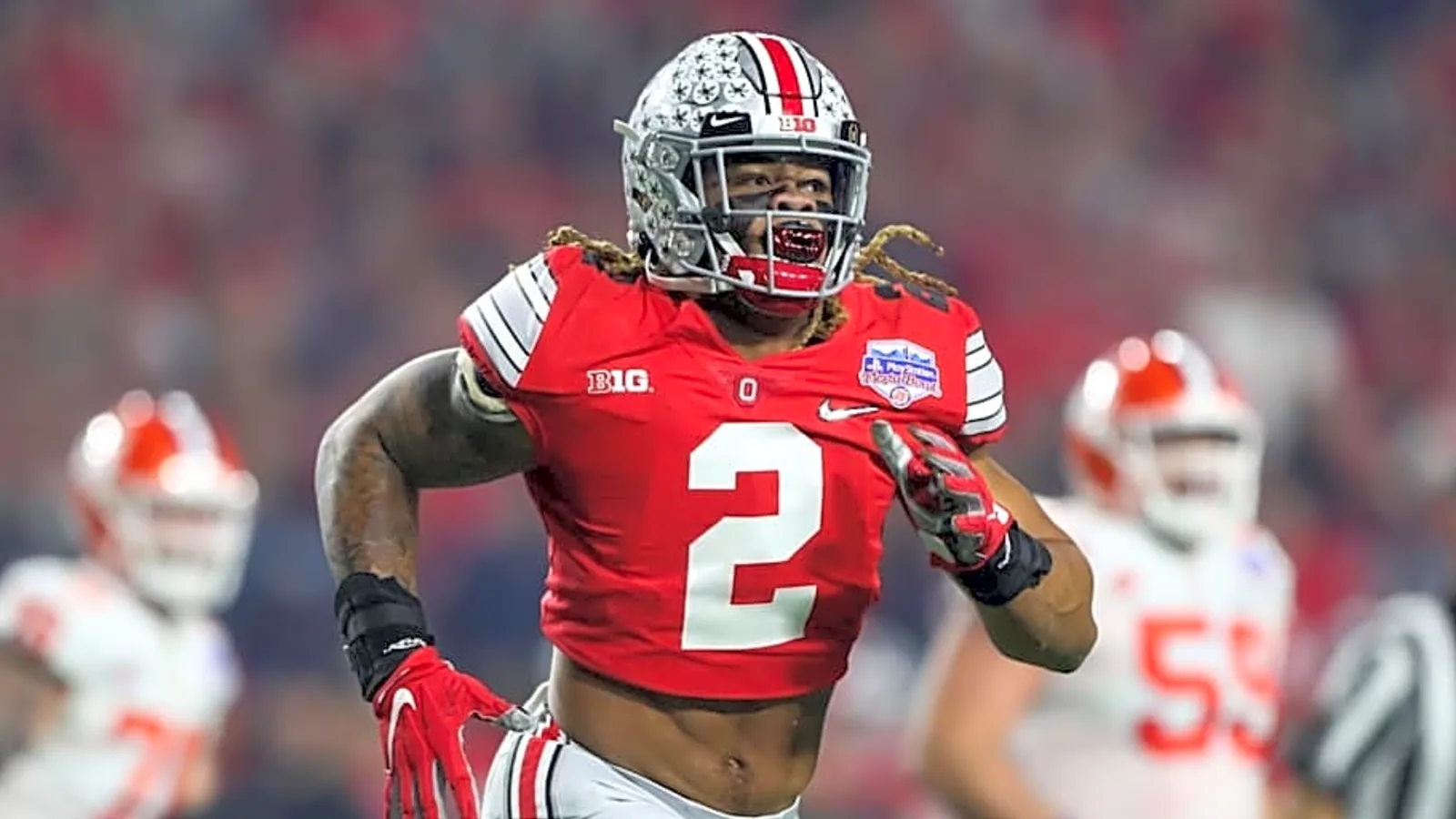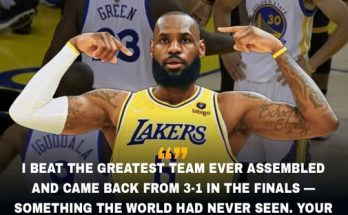In the world of professional football, few paths generate as much hype and scrutiny as that of a successful college star transitioning to the NFL. When that star hails from Ohio State University—a program teeming with legacy, championships, and fan expectations—the spotlight is all the more intense. And when that player signs a jaw-dropping NFL contract, the praise is only matched by the criticism. Today, a Buckeye legend is once again in the headlines—not for an injury, not for poor play necessarily, but for the scrutiny surrounding his massive contract.
The Player in Question: Ezekiel Elliott
Though several former Ohio State Buckeyes have signed substantial NFL contracts—Joey Bosa, Michael Thomas, Chase Young—the one drawing renewed criticism is none other than Ezekiel Elliott, the former face of the Dallas Cowboys’ offense and current New England Patriots running back. Elliott, once revered for his punishing running style and game-changing plays, now finds himself the subject of public debate, sports radio hot takes, and front-office second-guessing.
The root of this resurgence in criticism? A combination of contract legacy, declining production, and the ever-evolving economics of the NFL running back position.
Ohio State Roots: The Rise of a Star
Before delving into the recent wave of scrutiny, it’s important to remember where Elliott’s journey began.
At Ohio State, Ezekiel Elliott became a national sensation. In 2014, during the College Football Playoff, he delivered one of the most dominant postseason stretches in NCAA history. Elliott racked up 696 rushing yards and eight touchdowns over three games, including 230 yards against Alabama in the Sugar Bowl and 246 yards in the national championship against Oregon. He was named the offensive MVP of both games.
Elliott’s performance turned him into a college football legend and cemented his legacy in Buckeye lore. It also catapulted him into top-tier NFL prospect status. When the Dallas Cowboys selected him fourth overall in the 2016 NFL Draft, it was with the expectation that he would be the final piece of their offensive puzzle.
Elliott’s NFL Peak—and the Contract That Changed Everything
Elliott did not disappoint in the early years. He led the NFL in rushing in 2016 (1,631 yards) and 2018 (1,434 yards), validating his draft position and establishing himself as one of the best backs in football.
Then came the record-setting deal.
In 2019, amid a holdout and questions about the shelf life of running backs, Elliott signed a six-year, $90 million extension with the Cowboys. At the time, it was the richest contract ever given to a running back, including $50 million guaranteed. Jerry Jones, always bold, doubled down on Zeke as the cornerstone of Dallas’s offense.
However, that deal soon became an anchor—both financially and in terms of public perception.
The Decline and the Backlash
By the 2020 season, cracks in Elliott’s game were apparent. Though he remained a capable runner, he was no longer explosive. Injuries, wear-and-tear, and a shifting offensive philosophy all contributed to a steady decline.
Between 2020 and 2022, Elliott averaged fewer than 4.0 yards per carry in two of those three seasons. His burst and elusiveness waned, and he became more of a short-yardage, between-the-tackles runner rather than the electric back who once broke 80-yard touchdowns with ease.
The criticism grew louder.
Pundits pointed to the Cowboys’ salary cap struggles and questioned why a modern NFL team would invest that much in a running back. Analytics-driven front offices were moving away from big-money backs, instead favoring committee approaches and mid-round draft picks. Elliott, through no fault of his own, became the symbol of a philosophy many now deemed outdated.
The Move to New England
In 2023, Elliott signed a one-year deal with the New England Patriots, signaling the end of his Cowboys chapter. The move was welcomed as a fresh start, but Elliott was no longer considered a game-changer. In Bill Belichick’s run-heavy, defense-first system, he became a veteran presence more than a star.
While Elliott’s numbers in New England were solid (652 rushing yards and 4 touchdowns), they weren’t enough to silence the critics. Every time a young, cheap running back made a big play elsewhere, Elliott’s contract with the Cowboys was brought up in comparison—even though he was no longer on that deal.
It’s the kind of legacy that follows a player when money and performance diverge.
Why the Criticism Won’t Go Away
There are several reasons Elliott’s contract continues to spark debate:
1. The Running Back Market Shift
Over the last few seasons, running backs have struggled to get long-term deals. Josh Jacobs, Saquon Barkley, and Jonathan Taylor all had contentious negotiations. Teams now operate under the belief that a good offensive line and system matter more than an elite, expensive back.
Elliott’s deal is often cited in these debates—not because he’s the only one, but because his drop-off was one of the most public.
2. Dallas’s Cap Issues
Though the Cowboys managed to move on from Elliott, the ripple effects of his contract lingered. With looming extensions for Micah Parsons, CeeDee Lamb, and Dak Prescott, fans and analysts regularly reference Elliott’s deal as a cautionary tale. The narrative? “Dallas can’t afford another Zeke-like situation.”
3. Performance vs. Pay
Even today, when Elliott signs modest veteran deals, fans remember the $90 million contract. It’s the cognitive dissonance of knowing what he was paid and seeing what he currently produces. That contrast fuels constant second-guessing.
Elliott’s Response to the Critics
To his credit, Ezekiel Elliott has handled the criticism with professionalism. He hasn’t lashed out at the media or blamed the Cowboys’ play-calling. Instead, he’s acknowledged that the game evolves—and that he, too, must evolve with it.
“I’m not 21 anymore,” Elliott said in a 2024 interview. “I still believe I can contribute, lead, and win. I’ve had a blessed career. Everything else is just noise.”
And he’s not wrong.
Elliott’s 8,904 career rushing yards put him among the top 40 all-time. He has three Pro Bowls, two rushing titles, and a role in one of the most successful college football runs ever. If that’s not a successful career, what is?
Rewriting the Narrative
The debate about Elliott’s contract will likely continue, especially as his era becomes a historical reference point in NFL front-office circles. But that doesn’t mean his legacy is tarnished.
Fans must learn to separate the contract from the player.
Elliott didn’t offer himself a $90 million deal—Jerry Jones did. Elliott performed at an elite level when he was young, shouldered a huge workload, and became one of the most identifiable players in the league. If he fell victim to the natural wear-and-tear of an NFL running back, that’s not scandalous—it’s expected.
Ironically, the league that glorifies bruising backs and tough runners is the same one that discards them the moment their yards-per-carry drops below 4.0. Elliott is far from the first, and he won’t be the last.
What’s Next for Elliott?
As of 2025, Elliott remains a free agent but has expressed interest in continuing his career. Teams in need of veteran leadership or goal-line toughness may still see value in what he brings. He’s not the explosive phenom of his Ohio State days, but he can still help a roster—especially a contender needing experience.
Whether he signs with another team or rides into the sunset, Elliott’s NFL story is already complete in many ways. The yards, the touchdowns, the moments—they can’t be erased.
If the price was high, so too was the production for several years. And in a league where so many draft picks don’t pan out, the Cowboys got a lot from Zeke. The criticism, while valid from a cap management standpoint, doesn’t undo what he gave to the franchise—or the unforgettable legacy he left at Ohio State.



